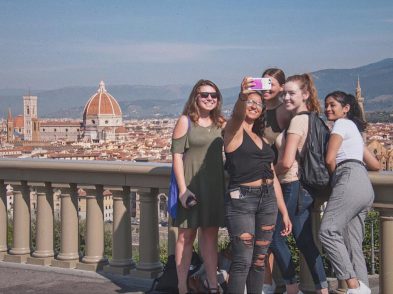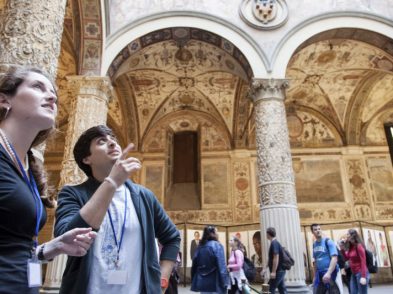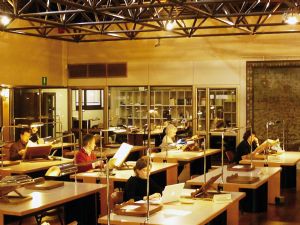I have heard you would like to try some cheeses from Pesaro,
so I am sending you these as a sample. Let me know if you like them and I’ll send more…
When Vladimir Putin calls George Bush, does he ask how the twins are doing? Did FDR and Churchill exchange recipes? Did Mao send Nixon gifts of herbal remedies? We always wonder about the personal relations between powerful people but rarely have access to their actual words.
The Medici archives, however, yield many of these exchanges, such as the words written by Guidobaldo II della Rovere, Duke of Urbino (1514-1574) to Grand Duke Cosimo I de’ Medici (1519-1574).
The two men, almost exact contemporaries, had much in common. Both came to power young, Guidobaldo at the age of 25, after his father died of suspected poisoning, and Cosimo at 17, when Duke Alessandro de’ Medici was stabbed to death. The learning curve was steep for both during the turbulent decades following the Sack of Rome and the Spanish occupation of Italy.
The Duchy of Urbino was filled with restless citizens tired of high taxes and constant war; bandits roamed its hills; and the papacy always had its eye on the state, eager for the smallest sign of weakness to repossess the territory. Neither was Cosimo’s take-over of Florence a tranquil affair: many Florentines still looked back nostalgically on their republic, plotting incessantly to remove him. Without the military and financial support of Emperor Charles V, Cosimo was helpless.
That these two men, who successfully navigated such dangerous waters, ruthlessly suppressing rebellions and assassinating enemies without a second thought, survived to die peacefully in their own beds is a testament to their fierce will.
Over the course of their careers, Guidobaldo and Cosimo, whose lands bordered one another (the line between present-day Tuscany and the Marches) wrote each other frequently. Apart from discussions of skirmishes and banditry in the mountainous frontiers, the usual recommendations of courtiers, and appeals for justice, their correspondence is full of nothing but friendly gestures. They send one another small gifts such as the cheese mentioned above, but also make large presents of racehorses, deer, even a lion. On one occasion, Cosimo sends a remedy for kidney stones. Year after year, they inform each other of important events, as when Guidobaldo excitedly send this message: In this very hour my Duchess by the grace of Our Lord has been delivered of a male child. There are many such letters: Guidobaldo had 12 children and Cosimo 15.
Later there would be letters of congratulation on the marriages of those children, and births of grandchildren. Given the high infant mortality rate, they also send frequent condolences. Though it is customary to write such notes in a formulaic manner, there is something particularly touching about the thank-you Guidobaldo writes to Cosimo after receiving Cosimo’s letter of condolence on the death of his wife:
From your letter I have both seen and understood the displeasure you feel at my sorrow, which certainly has been, and still is very great. This is only appropriate to such a loss as I have suffered, having lost a part, the very best part, of myself…
Reading these many gracious outpourings of friendly feeling, one wonders: Is it possible these two tough characters never experienced friction in their dealings with one another?
On the contrary, they had many differences, and one highly revealing letter shows how the shrewd Duke of Urbino finds a way to reprimand the Duke of Tuscany without openly confronting him. Duke Guidobaldo writes to his mother-in-law, Caterina Cibo, who is living at the Florentine court, telling her about recent military developments-some soldiers the Duke of Urbino ‘gave’ Cosimo were captured in Marciano in July, 1554, as part of Cosimo’s attempt to conquer Siena, which he did in August:
Captain Lattantio…came here telling me that he found himself in Marciano with his company composed entirely of men from this state [Urbino] given by me to serve the Duke of Florence, and having been taken by the army of the King of France, Piero Strozzi wanted to have him hanged. But after he [Lattantio] explained that he was a favorite of mine and that all those soldiers had been given by me to him, Strozzi granted all those soldiers their liberty, saying that it was out of his respect for me that he did so…
Why is the Duke telling all this to his mother-in-law? Does she really care if some soldiers from Urbino were pardoned? The only clue comes later in the letter, when Guidobaldo again refers to Piero Strozzi, the Florentine rebel and sworn enemy of Cosimo:
‘When Duke Cosimo sees how much respect was shown to me by Strozzi, even though he never asked me for a single soldier in this war, then maybe out of respect for me His Excellency [Cosimo] will treat my subjects better when they come into his power. I have given him entire companies, particularly the one from Gubbio that I wrote to you about, who told me that they were treated like slaves and forced to serve aboard galleys…
So, rather than firing off an angry missive in the heat of rage that could destroy the well-crafted alliance with Florence, the Duke tells his mother-in-law, who is sure to spread the word at the Florentine court. Cosimo will hear this complaint. This is the diplomacy was carried out by these very shrewdest of politicians. The only overt gestures were carefully orchestrated and effusive kindnesses, while behind the scenes they employed the subtlest cunning to smooth their differences.
And did Cosimo appreciate the cheese? Apparently he loved it, as Guidobaldo sent a hundred more to his dear friend the next year.







